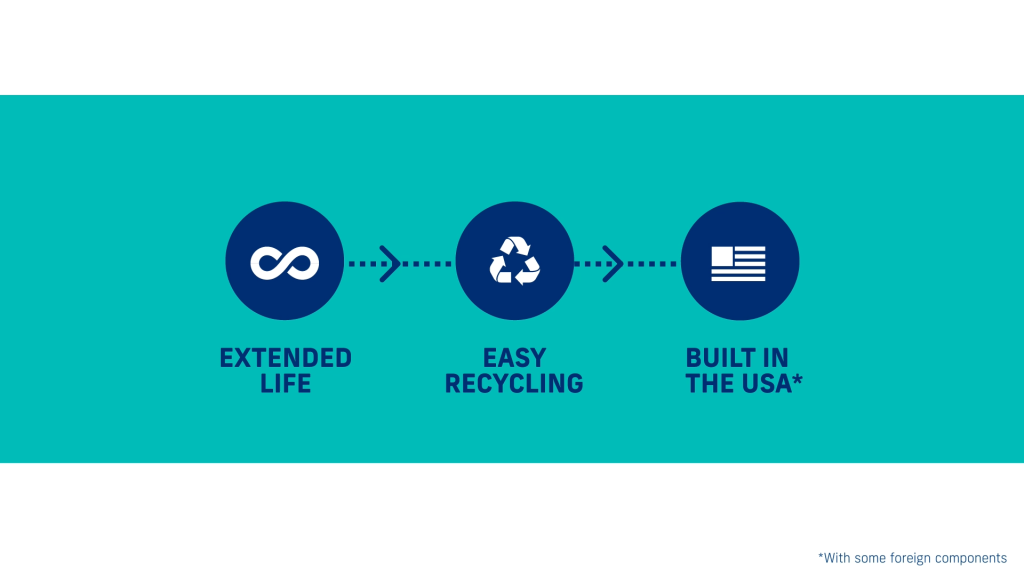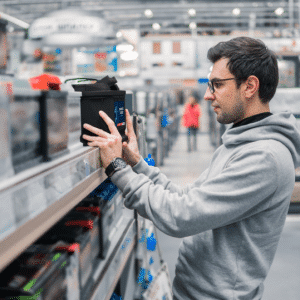Stryten Energy’s vanadium redox flow batteries (VRFB) are quickly emerging as a proven solution for long-duration, essential power applications.
But what’s on the inside of a VRFB?
Renewable energy is essential to powering our world. Yet, the challenge has always been solving the need for sustainable, long-duration energy storage alongside renewable generation. Stryten Energy’s advanced vanadium redox flow batteries are a durable, safe option for energy storage of 4+ hours, and an extended life cycle of 20 years or more. VRFB are ideally suited for microgrids, hospitals, telecom, utility, military and commercial applications, to name a few.
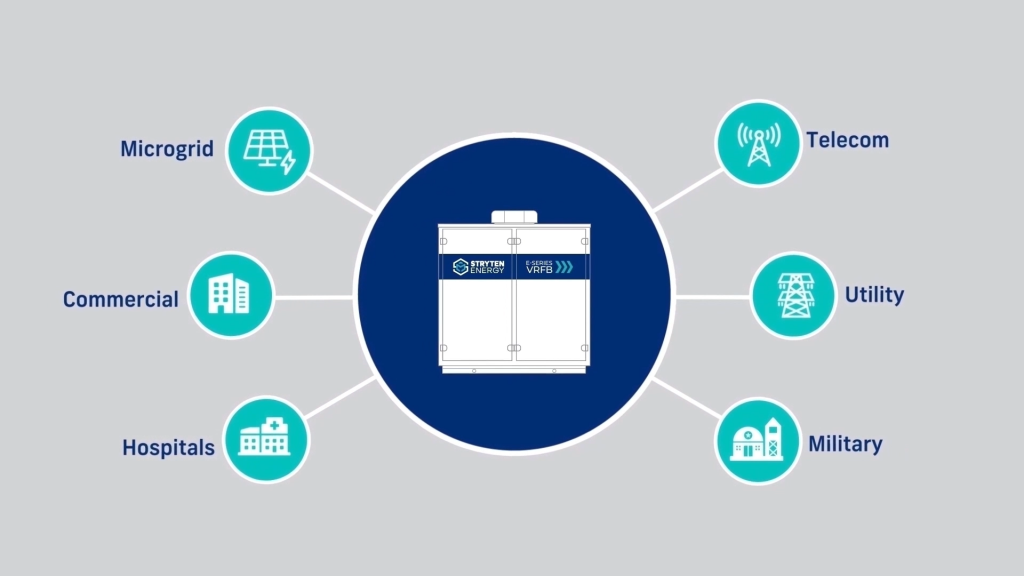
First, let’s look at how a VRFB works:
Vanadium redox flow batteries are unique because the energy is stored in liquid materials, rather than solid electrodes. Energy is stored in the battery, or delivered to power a load, by simply moving around electrons and changing the chemical state of the vanadium.
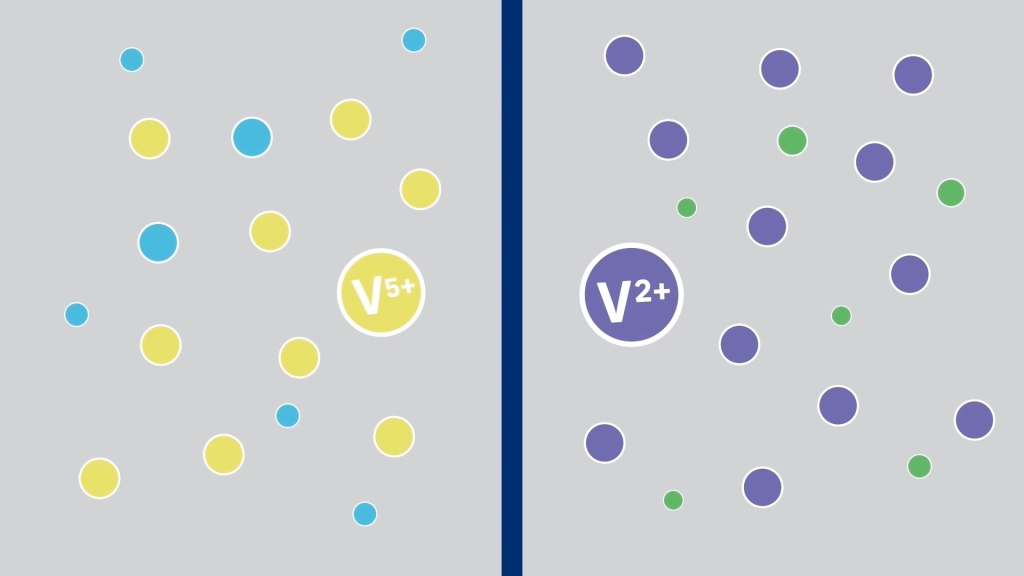
This delivers a very stable battery capacity that can last for 20 years or more without losing capacity or needing to be replaced.
The flow batteries’ solutions, called the electrolytes, are stored in tanks – similar to the gas tank in your car. The electrolytes are pumped through cell stacks that serve as the engine of the battery. In this case, there are two tanks – one for the positive electrolyte and one for the negative electrolyte.
Each cell stack has a positive and negative chamber. Pumps push the electrolytes through their respective chambers while an ion exchange membrane prevents the mixing of solutions.
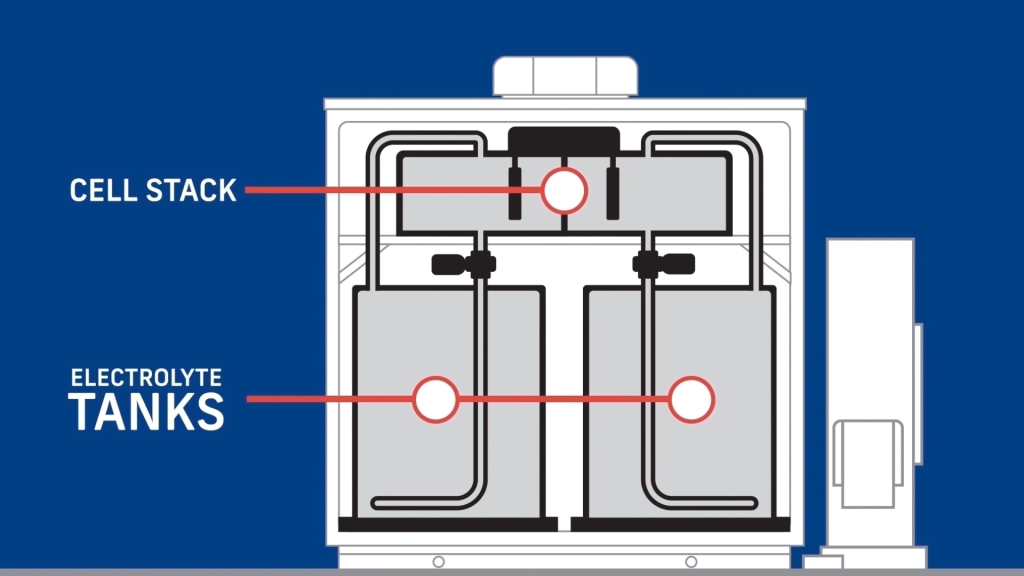
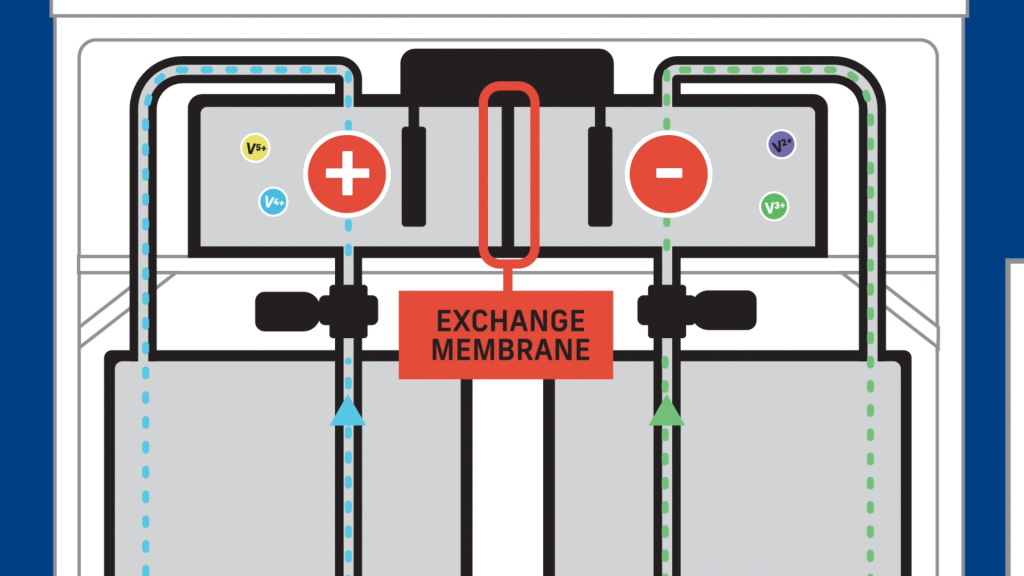
As the electrolytes flow through the stacks, power can be applied to or extracted from the battery by changing the chemical oxidation state of the electrolyte solutions by adding or removing electrons. On one side of the battery, the vanadium is converted between 2+ and 3+ oxidation states; on the other, 4+ and 5+ states.
The existence of four oxidation states for a single material is unique to vanadium and improves the stability and manufacturability of the VRFB system. The addition or subtraction of electrons causes the solutions to change color.
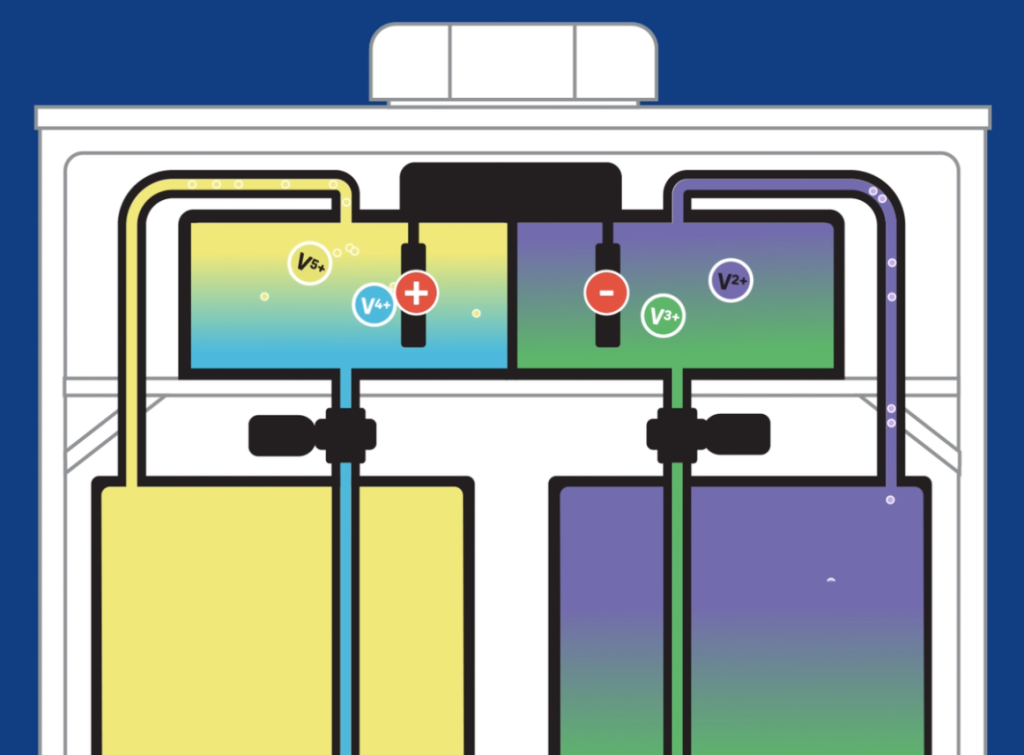
The VRFB is highly modular with battery energy storage systems available from kilowatt-hour to megawatt-hour. Larger systems are produced simply by using a larger number of stack and tank modules connected together.
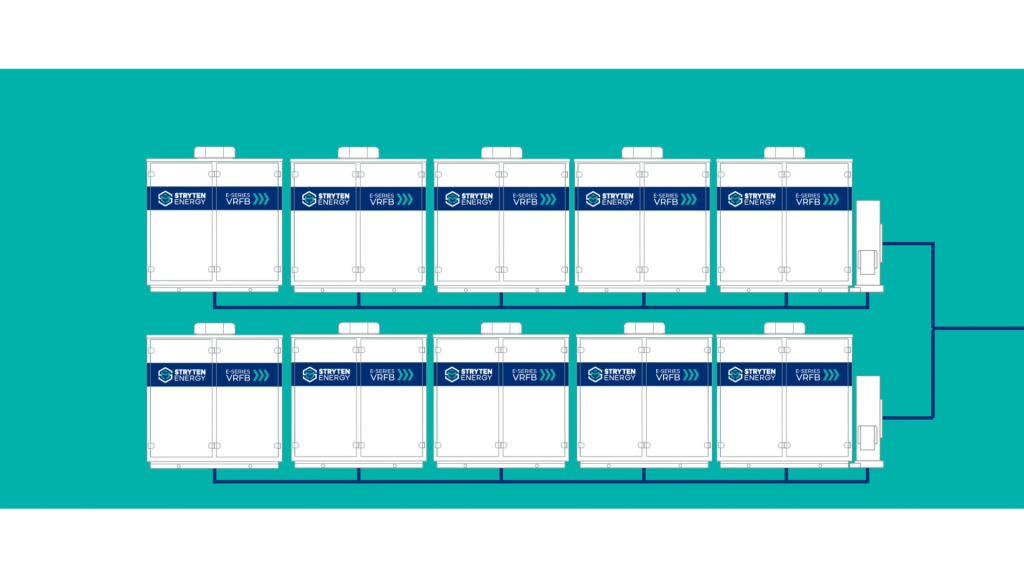
The VRFB systems are also built with their own brain that monitors the battery’s health, state of charge and more. This allows the VRFB to be operated remotely, and autonomously, through the cloud from anyone, anywhere in the world.
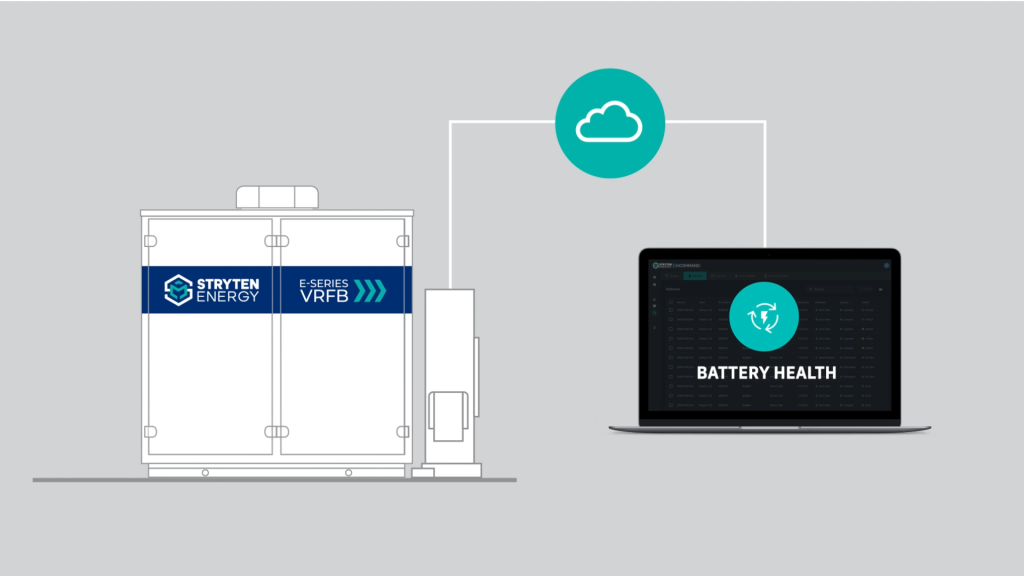
Let’s recap the benefits of VRFB technology:
- An extended cycle life lasting 20 years or more
- Modular and scalable
- A safe, non-flammable energy storage alternative
- Plus, extreme durability and stability
- Long-duration energy storage of 4+ hours
Stryten Energy’s VRFB is essential to solving the need for long-duration energy storage – delivering extended cycle life with proper maintenance, easy recycling and proudly built in the U.S.A.
To learn more about our advanced VRFB technology, contact your Stryten Energy representative.
